Sustainability Assessment of Urban Heritage Sites
Abstract
:1. Introduction
1.1. The Brundlandt Definition as a Starting Point
1.2. Diachronic and Synchronic Relationships of Sustainable Development (SD)
- The improvement of the quality of life, according to current needs (synchronic).
- The protection of future needs, in terms of quality of life (syn–diachronic).
- The enjoyment of these heritage values by future generations (diachronic).
2. Aim and Methodology: Search for a Holistic Vision
3. Theoretical Track: The Multimodal System as an Epistemological Exercise
4. Empirical Track: Creation of a Set of Indicators
4.1. References and Principles for a Set of Indicators
4.2. Criteria for the Selection of the Appropriate Indicators
- Salience: Is the indicator relevant to the type and scale of the heritage? Does the indicator meet the adequate scope of Bellagio-principle 5 [21] (pp. 1–4)? Is the indicator relevant for long-term sustainability and does it play an important role at higher levels than the local one? Is the indicator significant for the actors involved (both policy and public), but also, is the indicator clear, unambiguous, and usable to communicate?
- Credibility (realistic measurability): Are the collected data for the indicator available, and in terms of time budget, are they technically feasible?
- Legitimacy: Is the indicator acceptable for all parties involved, both for experts (scientific validity) and stakeholders? This can be adequately consulted by the questionnaires in the context of the weighting.
4.3. Five Pillars of Sustainable Development
4.4. Creation of a Set of Indicators
5. Case Study: The Beguinage of the Minnewater Site in Bruges, Belgium (World Heritage Site)
5.1. Quick Scan as a Test
5.2. Chart Beguinage Area—Minnewater
5.3. SWOT Analysis
5.4. Conclusion Case Study
6. Conclusions
Author Contributions
Funding
Acknowledgments
Conflicts of Interest
References
- Avrami, E. Sustainability and the Built Environment: Forging a Role for Heritage Conservation. Conserv. Perspect. GCI Newsl. 2011, 26, 4–9. [Google Scholar]
- Report of the World Commission on Environment and Development Transmitted to the General Assembly as an Annex to document A/42/427—Development and International Cooperation: Our Common Future. Chapter 2: Towards Sustainable Development. 1987. Available online: http://www.un-documents.net/ocf-02.htm (accessed on 15 March 2018).
- Throsby, D. Sustainability in the Conservation of the Built Environment: An Economist’s Perspective. In Managing Change: Sustainable Approaches to the Conservation of the Built Environment; Teutonico, J.M., Matero, F.F., Eds.; Getty Conservation Institute: Los Angeles, CA, USA, 2003; pp. 3–10. ISBN 0-89236-692-3. [Google Scholar]
- Convention for the Protection of the Architectural Heritage in Europe, (Granada Convention, 3 October 1985); CETS No. 121; The Council of Europe: Strasbourg, Germany, 1985; Available online: http://conventions.coe.int/Treaty/en/Treaties/Html/121.htm (accessed on 15 March 2018).
- ICOMOS. Charter for the Conservation of Historic Towns and Urban Areas; Washington Charter 1987; ICOMOS General Assembly: Washington, DC, USA, 1987; Available online: http://www.international.icomos.org/charters/towns_e.pdf (accessed on 15 March 2018).
- Lombardi, P.; Brandon, P. Evaluating Sustainable Development in the Built Environment; Blackwell: Oxford, UK, 2010; ISBN 978-1-405-19258-3. [Google Scholar]
- Lombardi, P. Understanding Sustainability in the Built Environment. A Framework for Evaluation in Urban Planning and Design. Ph.D. Thesis, University of Salford, Salford, UK, 1999. [Google Scholar]
- UNESCO. Recommendation on the Historic Urban Landscape (10 November 2011) 2011. Available online: http://portal.unesco.org/en/ev.php-URL_ID=48857&URL_ DO=DO_TOPIC&URL _ SECTION=201.html (accessed on 6 July 2018).
- Vandevyvere, H. Strategieën Voor een Verhoogde Implementatie van Duurzaam Bouwen in Vlaanderen. Toepassing op Het Schaalniveau van Het Stadsfragment. Ph.D. Thesis, KU Leuven, Leuven, Belgium, 2010. [Google Scholar]
- Dooyeweerd, H. De Wijsbegeerte van de Wetsidee. Boek I. De Wetsidee als Grondlegging der Wijsbegeerte; H.J. Paris: Amsterdam, The Netherlands, 1935; Available online: http://www.dbnl.org/tekst/dooy002wijs01_01/colofon.php (accessed on 15 March 2018).
- Bossel, H. Indicators for Sustainable Development: Theory, Methods, Applications. A Report to the Balaton Group; International Institute for Sustainable Development: Winnepeg, MB, Canada, 1999; ISBN 13 978-1895536133. [Google Scholar]
- Rotmans, J.; de Vries, H. Indicators for Sustainable Development. Perspectives on Global Change: The TARGETS Approach; University Press: Cambridge, UK, 1997; ISBN 0-52162-176-3. [Google Scholar]
- Nusselder, E.J.; van de Ven, H.; Haas, M.; Dulski, B. Handboek Duurzame Monumentenzorg. Theorie en Praktijk van Duurzaam Monumentenbeheer; SBR: Rotterdam, The Netherlands, 2011. [Google Scholar]
- Stubbs, M. Heritage-Sustainability: Developing a Methodology for the Sustainable Appraisal of the Historic Environment. Plan. Pract. Rese. 2004, 19, 285–305. [Google Scholar] [CrossRef]
- Clark, K. Only Connect—Sustainable Development and Cultural Heritage. In The Heritage Reader; Fairclough, G., Harrison, R., Jameson, J.H., Jr., Schofield, J., Eds.; Routledge: London, UK; New York, NY, USA, 2010; pp. 82–98. [Google Scholar]
- English Heritage. Sustaining the Historic Environment. New perspectives on the future. In The Heritage Reader; Fairclough, G., Harrison, R., Jameson, J.H., Jr., Schofield, J., Eds.; Routledge: London, UK; New York, NY, USA, 2010; pp. 311–321. [Google Scholar]
- Clark, W.; Mitchell, R.; Cash, D.; Alcock, F. Information as Influence: How Institutions Mediate the Impact of Scientific Assessments on Global Environmental Affairs; Faculty Research Working Papers Series; John F. Kennedy School of Government, Harvard University: Harvard, MA, USA, 2002. [Google Scholar]
- Parris, T.; Kates, R. Characterizing and Measuring Sustainable Development. Annu. Rev. Environ. Resour. 2003, 28, 1–28. [Google Scholar] [CrossRef]
- Beco, M. L’expertis Comme Influence: Impact de Systèmes D’indicateurs Environnementaux sur la Prise de Décision Politique en Matirèe D’environnement. Master’s Thesis, Université Libre de Bruxelles, Bruxelles, Belgium, 2006. [Google Scholar]
- Ciegis, R.; Ramanauskiene, J.; Startiene, G. Theoretical Reasoning of the Use of Indicators and Indices for Sustainable Development Assessment. Eng. Econ. 2009, 3, 33–40. [Google Scholar]
- Hardi, P.; Zdan, T. (Eds.) Assessing Sustainable Development; Principles in Practice; International Institute for Development: Winnipeg, MB, Canada, 2009; ISBN 1-895536-07-3. [Google Scholar]
- Valentin, A.; Spangenberg, J. A guide to community sustainability indicators. Environ. Impact Assess. Rev. 2000, 20, 381–392. [Google Scholar] [CrossRef]
- Alfonzo, M. To Walk or Not to Walk? The hierarchy of walking needs. Environ. Behav. 2005, 37, 808–836. [Google Scholar] [CrossRef]
- Luten, I.; Lopez, M.; Woldendorp, T.; Van Zwam, C. Handboek Veilig Ontwerp en Beheer; Uitgeverij THOTH: Bussem, The Netherlands, 2008. [Google Scholar]
- Vernimme, N. Energiezuinig Leven in Woningen met Erfgoedwaarde; Agentschap Onroerend Erfgoed: Brussels, Belgium, 2013. [Google Scholar]
- ICOMOS. The Venice Charter: International Charter for the Conservation and Restoration of Monuments and Sites; ICOMOS: Paris, France, 1964; (revised 2004); Available online: http://www.icomos.org/venicecharter2004/dutch.pdf (accessed on 15 March 2018).
- ICOMOS. Firenze Charter on Historic Gardens; ICOMOS: Paris, France, 1982; Available online: http://www.international.icomos.org/charters/gardens_e.pdf (accessed on 15 March 2018).
- ICOMOS. Quebec Declaration on the Preservation of the Spirit of Place; ICOMOS: Paris, France, 2008; Available online: http://www.international.icomos.org/quebec2008/quebec_declaration/pdf/GA16_Quebec_Declaration_Final_EN.pdf (accessed on 15 March 2018).
- Australia ICOMOS. Australia ICOMOS Charter for Places of Cultural Significance; (The Burra Charter), Pamphlet. Australia ICOMOS Inc.: Burwood, Australia, 2013. Available online: http://australia.icomos.org/wp-content/uploads/The-Burra-Charter-2013-Adopted-31.10.2013.pdf (accessed on 15 March 2018).
- Agentschap Onroerend Erfgoed. Begijnhof [online], Tijl Vereenooghe. 2018. Available online: https://id.erfgoed.net/erfgoedobjecten/122155 (accessed on 6 July 2018).
- Bell, S.; Morse, S. Sustainability Indicators—Measuring the Immeasurable? Earthscan: London, UK, 2010; ISBN 13 978-1-84407-299-6. [Google Scholar]
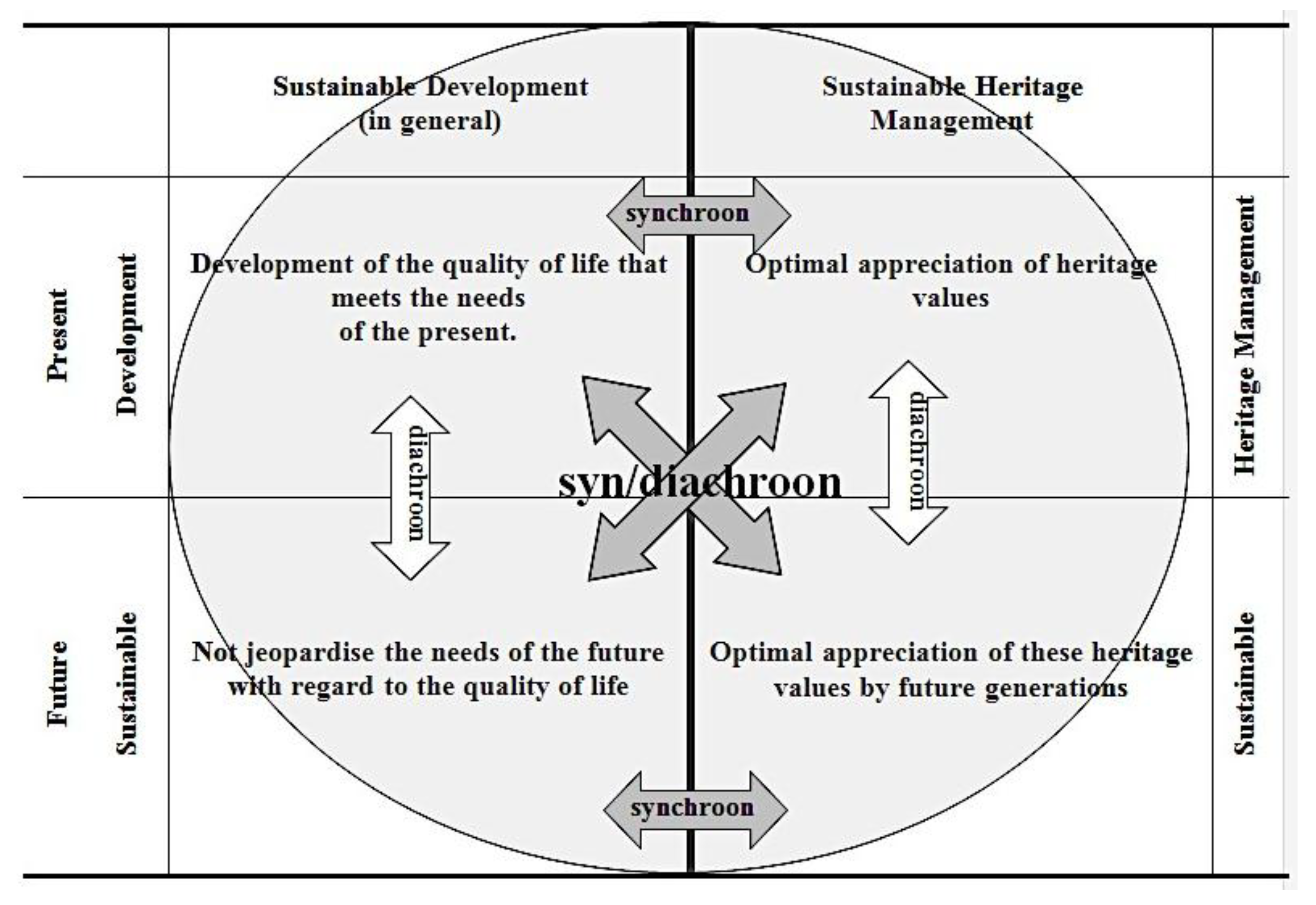
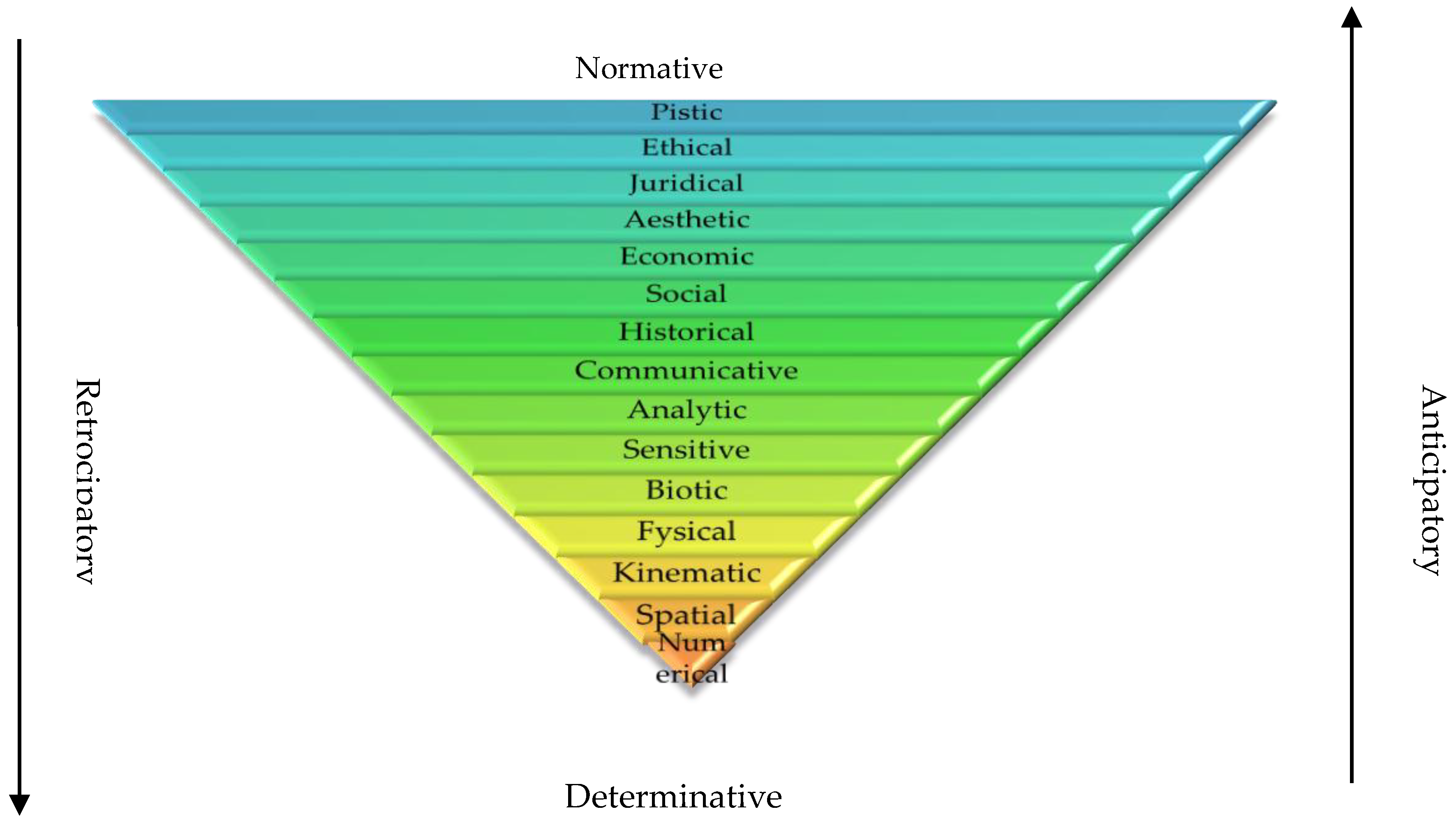
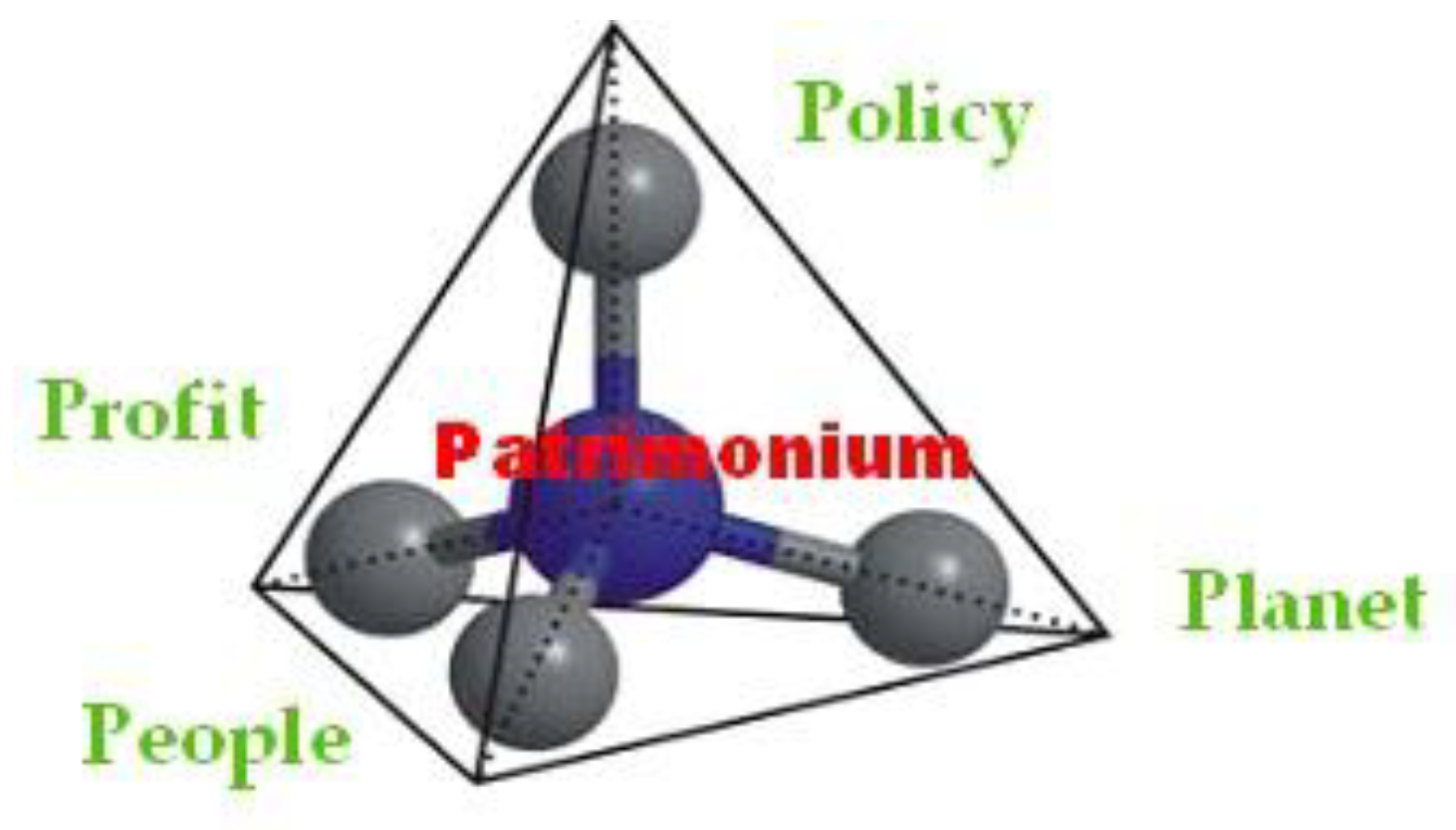
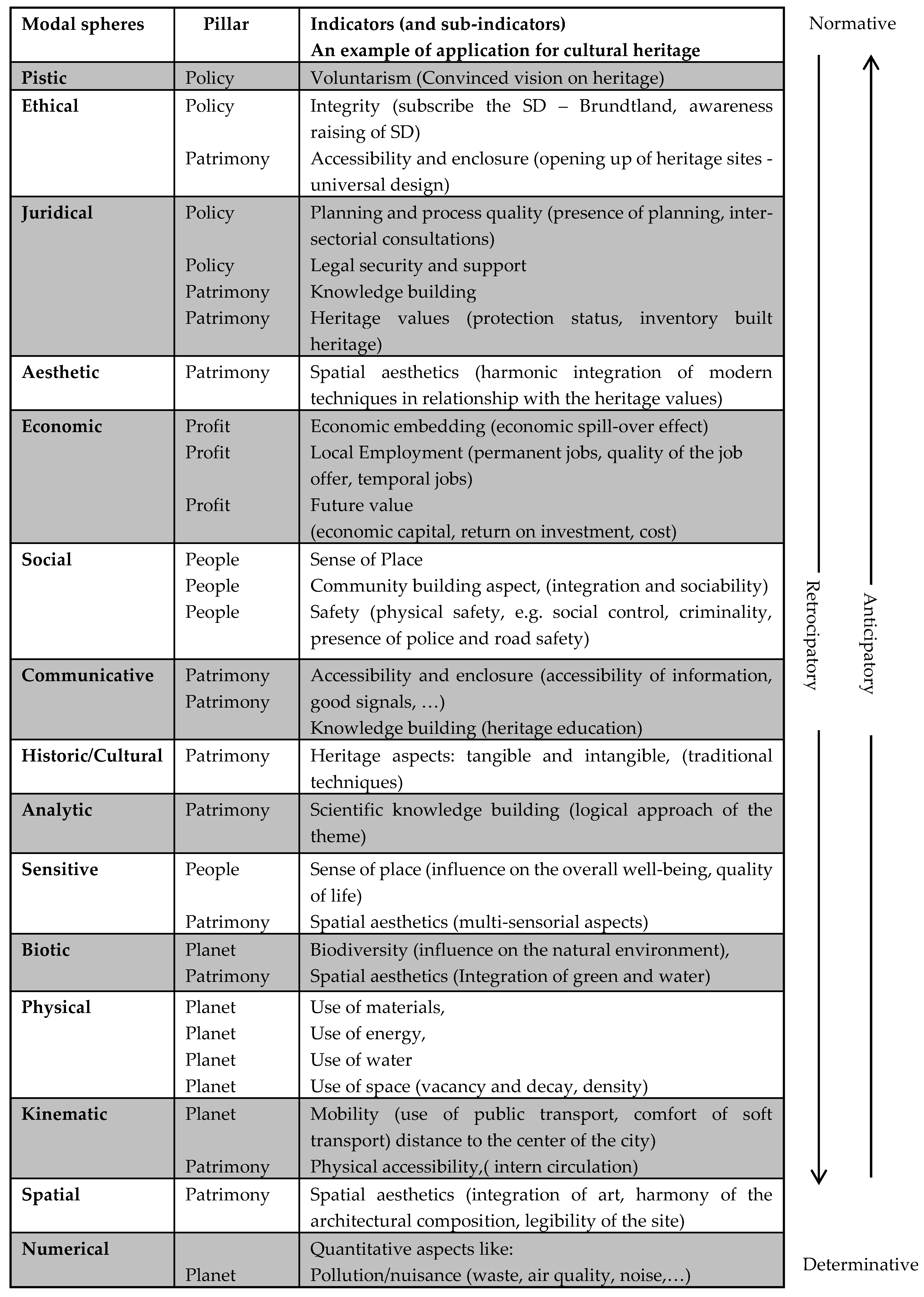
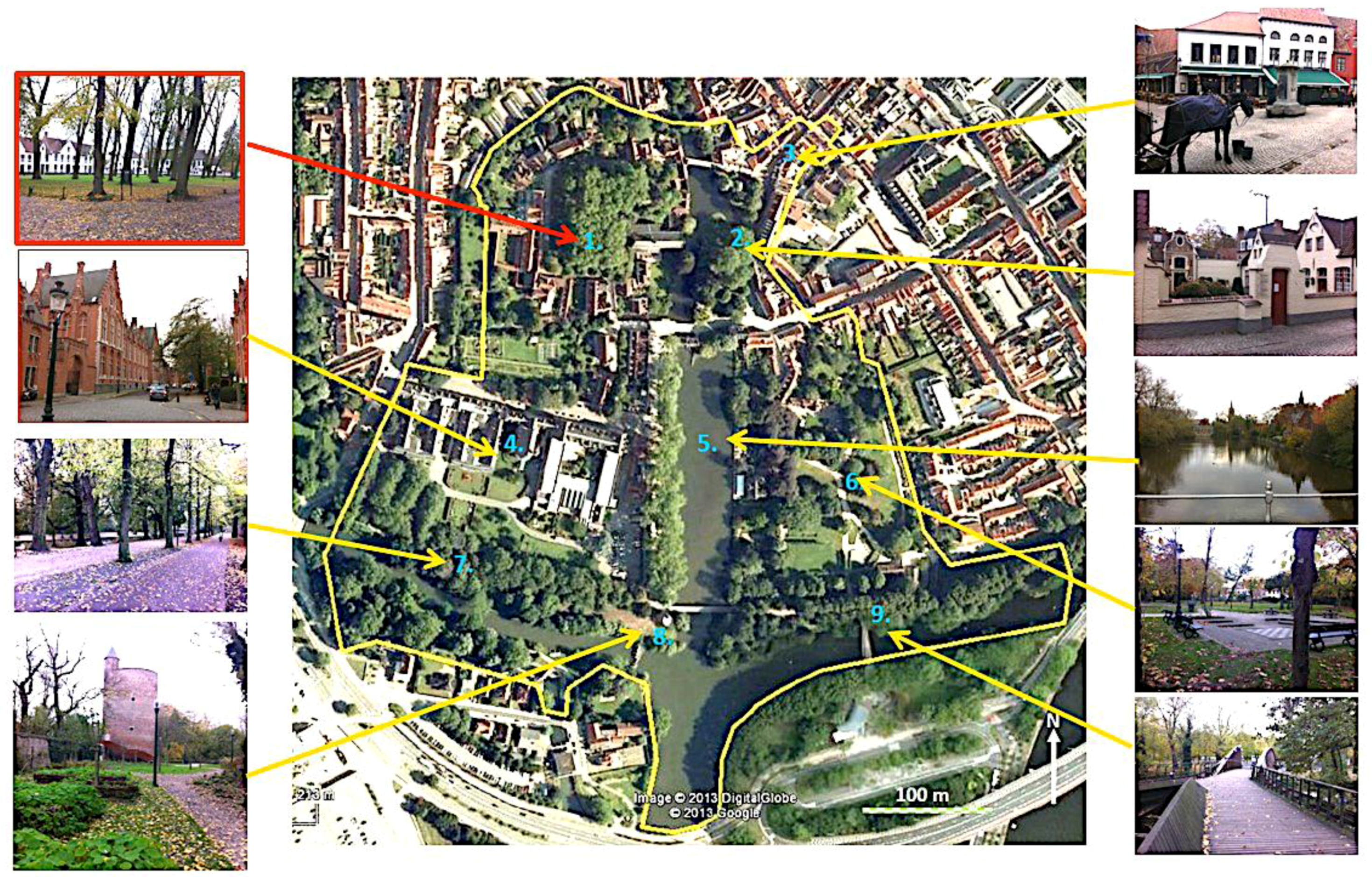
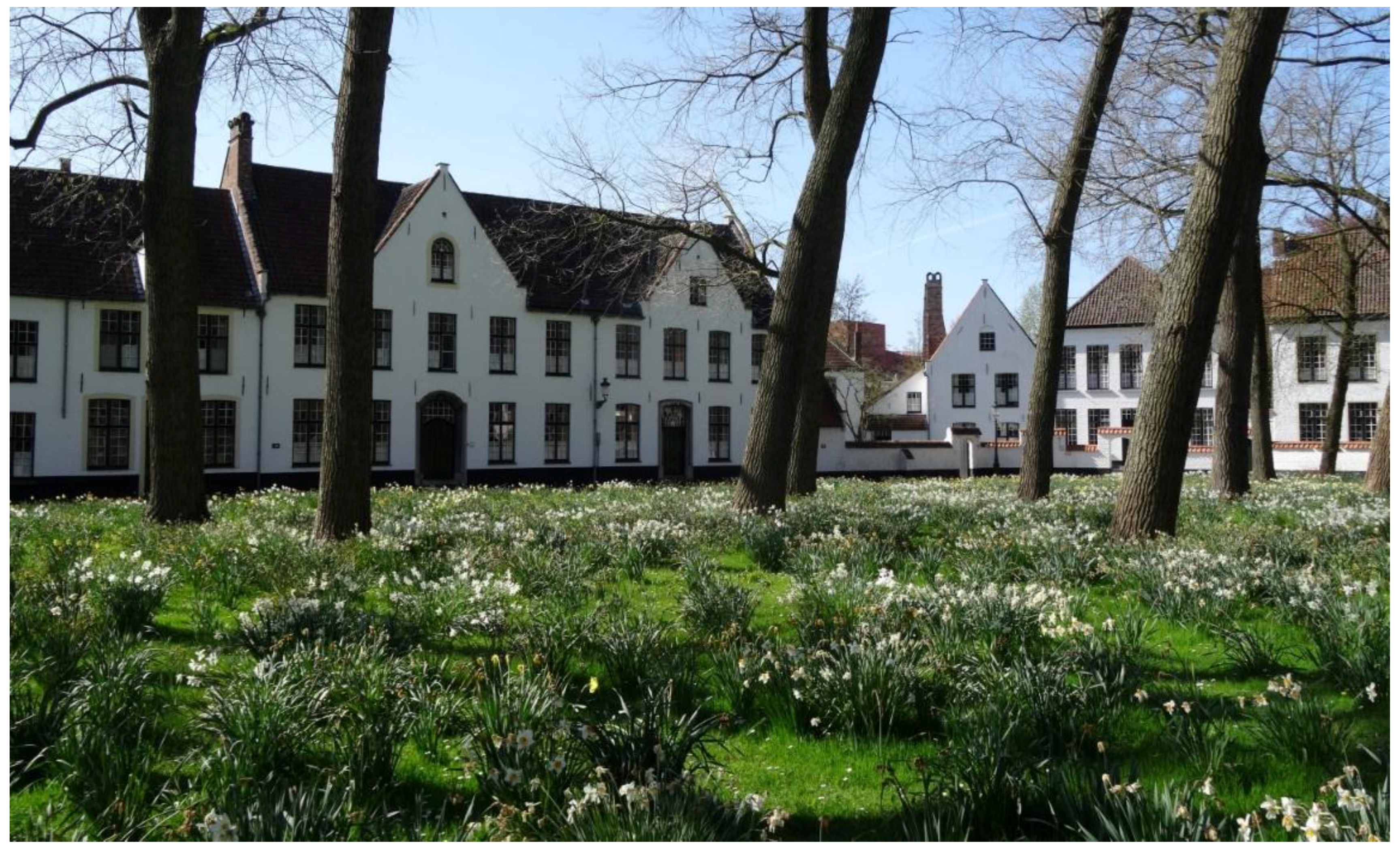
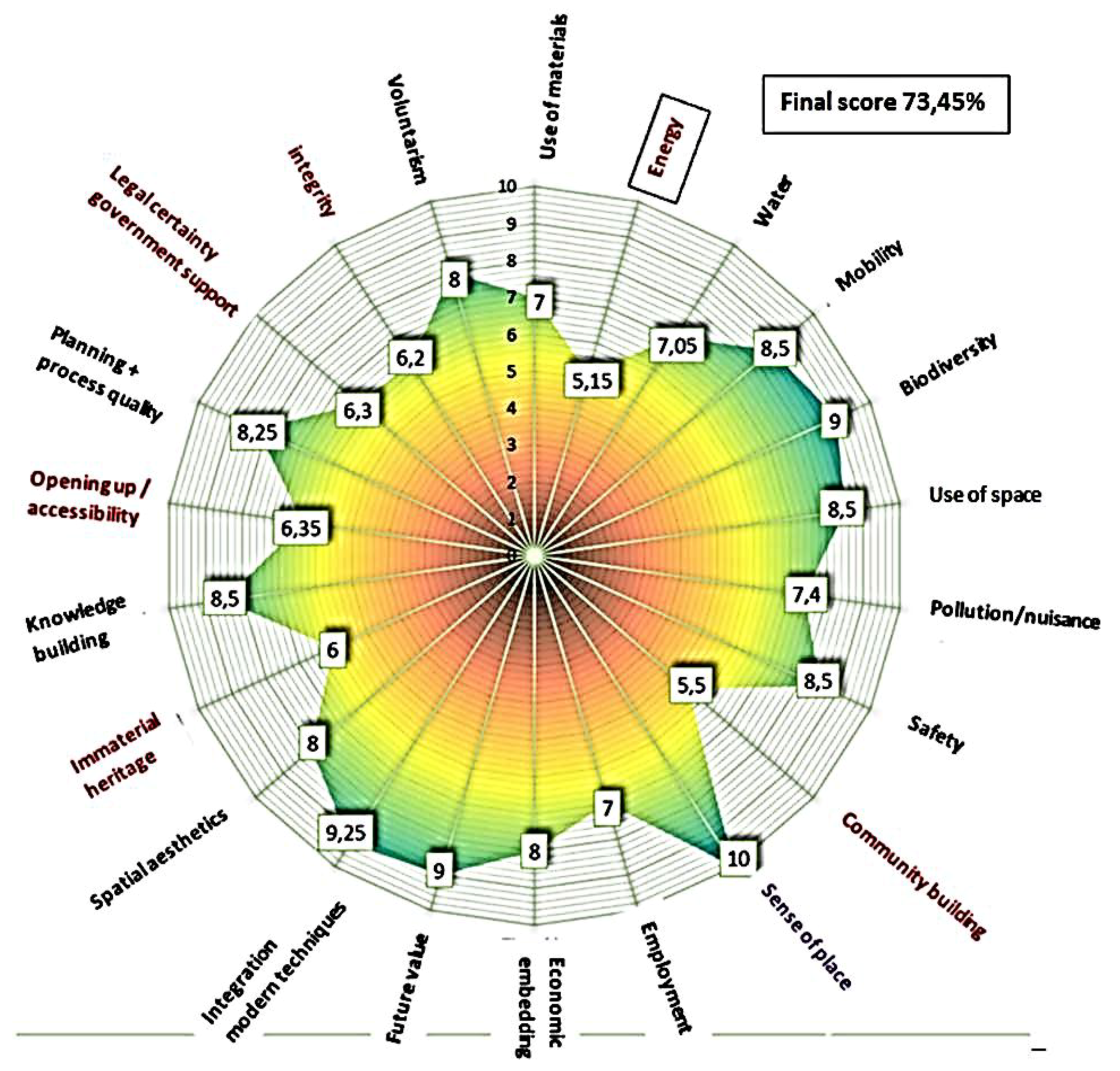
© 2018 by the authors. Licensee MDPI, Basel, Switzerland. This article is an open access article distributed under the terms and conditions of the Creative Commons Attribution (CC BY) license (http://creativecommons.org/licenses/by/4.0/).
Share and Cite
Leus, M.; Verhelst, W. Sustainability Assessment of Urban Heritage Sites. Buildings 2018, 8, 107. https://doi.org/10.3390/buildings8080107
Leus M, Verhelst W. Sustainability Assessment of Urban Heritage Sites. Buildings. 2018; 8(8):107. https://doi.org/10.3390/buildings8080107
Chicago/Turabian StyleLeus, Maria, and Wouter Verhelst. 2018. "Sustainability Assessment of Urban Heritage Sites" Buildings 8, no. 8: 107. https://doi.org/10.3390/buildings8080107



